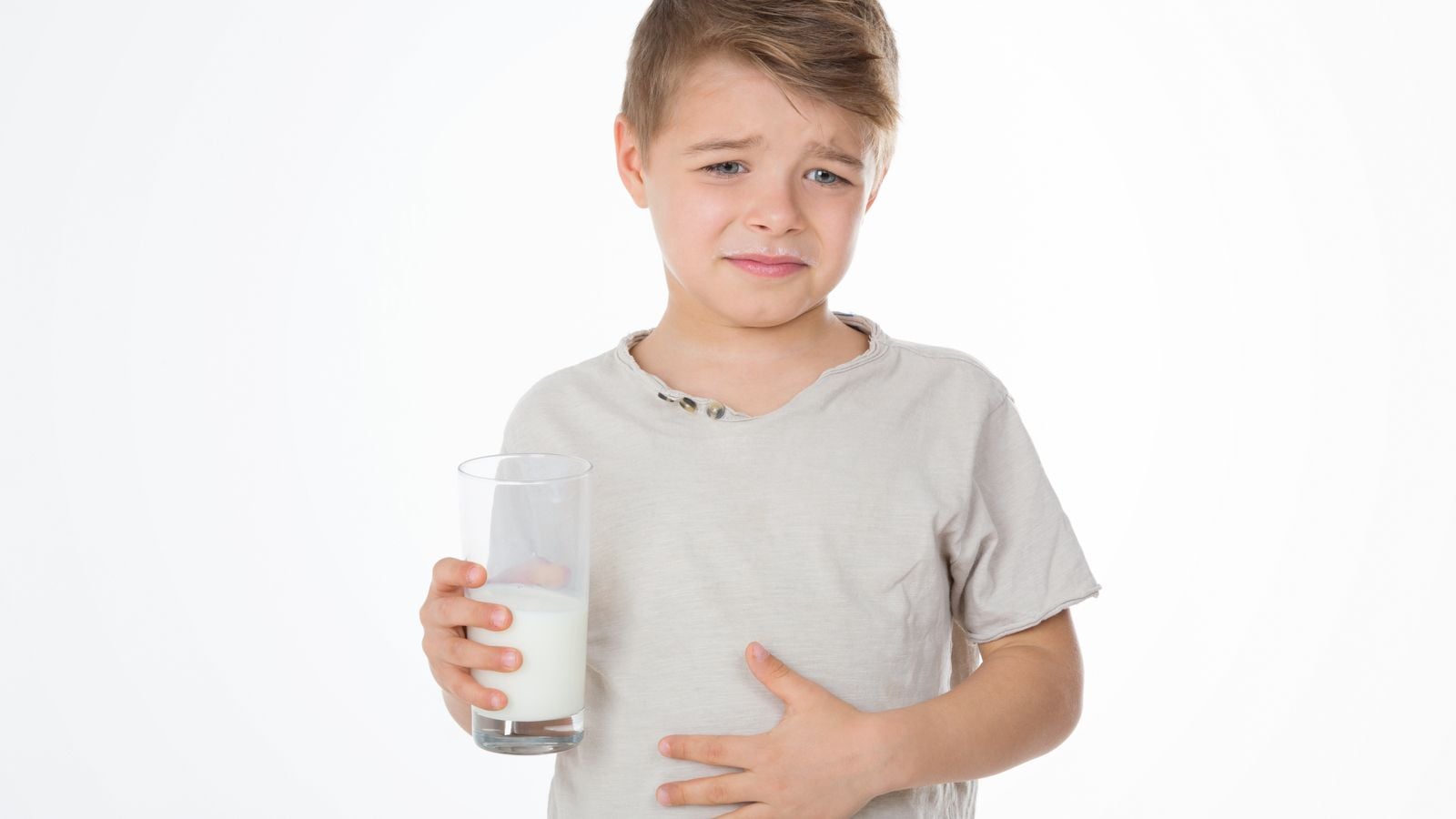
Children who have lactose intolerance can experience gas, bloating, diarrhea, and even vomiting when they consume milk or any dairy products that contain lactose, like cheese and ice cream. The symptoms of lactose intolerance are very similar to a milk allergy, but the two disorders are very different.
With lactose intolerance you don't have an enzyme that allows you to break down the sugar lactose, and that's what causes the symptoms. This sugar can make you sick, but it won't damage your intestinal tract.
With a milk allergy, your immune system attacks the protein that is in the milk. These attacks not only cause gastrointestinal symptoms; they can also damage the intestinal tract. A milk allergy can also be dangerous, and potentially fatal, because any tissues that come into contact with the milk protein can swell, including your lips, tongue, and throat.

Consuming Milk and Milk Products
Children with milk allergies should avoid milk at all costs. Children who are lactose intolerant might be able to consume small amounts of certain milk or dairy products. Some dietary considerations include:
Some people with lactose intolerance find yogurt easier to digest
Some people with lactose intolerance find heated or cooked dairy products easier to digest
Some people with lactose intolerance find organic dairy products easier to digest than conventional ones
Consuming dairy products on an empty stomach can sometimes make the reaction worse
Consider using lactose-free or lactose-reduced dairy products
Try restricting yourself to one dairy product per sitting, for example, if you use butter on your toast, avoid putting milk in your coffee.
Consider trying other types of milk, such as goat, which could have less lactose than cow's milk
Alternatives to Dairy
In recipes, dairy adds creaminess and richness. If your child is not able to consume any dairy products, you can use alternatives to provide some of the same texture and flavor to favorite recipes, including:
Use nut, soy, hemp, or rice milks in place of dairy milk in cereals and recipes that use milk
Consider using vegan cheeses in place of dairy cheese
Use silken tofu, soy yogurt, or soy ice cream in smoothie recipes in place of milk or yogurt
Pureed white beans and potato flakes can add a creamy texture to soups and stews
Things to Consider
In addition to making dietary adjustments, if your child has lactose intolerance, you can also give him over-the-counter medicines to help digest the lactose in milk products. This type of medication will not work for a child with a milk allergy.
Although dairy is an excellent source of calcium, you can also make sure your child gets enough calcium from leafy green vegetables, tofu, cold water fish, and calcium-fortified foods such as orange juice.
Because symptoms are usually obvious, you will be able to tell if your child has a milk allergy or lactose intolerance. In other words, if your child has a bad reaction to milk or milk and dairy products, you should have him tested to determine the cause. Sometimes additional monitoring and allergy testing are needed because what looks like a reaction to milk could actually be a reaction to something else, such as an allergy to the wheat in the cereal served with the milk.

